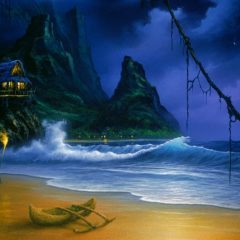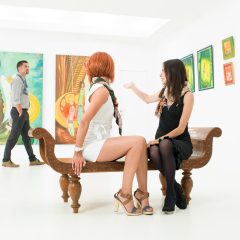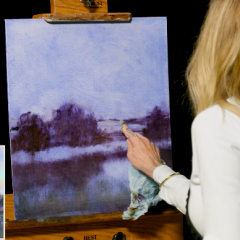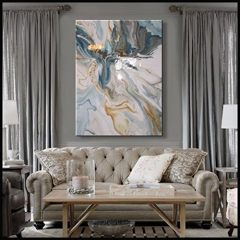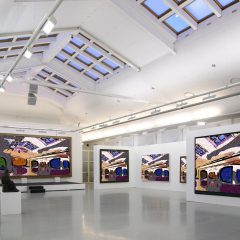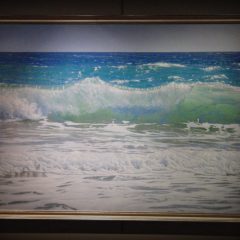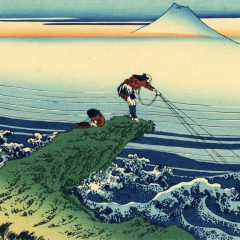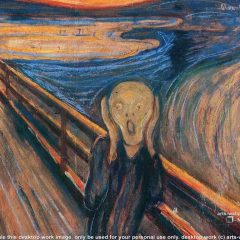As a representational artist, I appreciate the ingenuity of painters with an abstract approach. I’ve tried my hand at abstract acrylic painting and found it fun, liberating, yet challenging.
However, the abstract approach toward painting is in many ways the same approach used by representational artists, including Claude Monet. There are some universal values or “rules” in painting, regardless of the technique or subject.
In this article, Jeffrey Olson, the Director of Art Education for Royal Talens of North America hopes to demystify the abstract painting process. He shares his colorful approach to abstract acrylic painting and some insightful thoughts on abstraction.
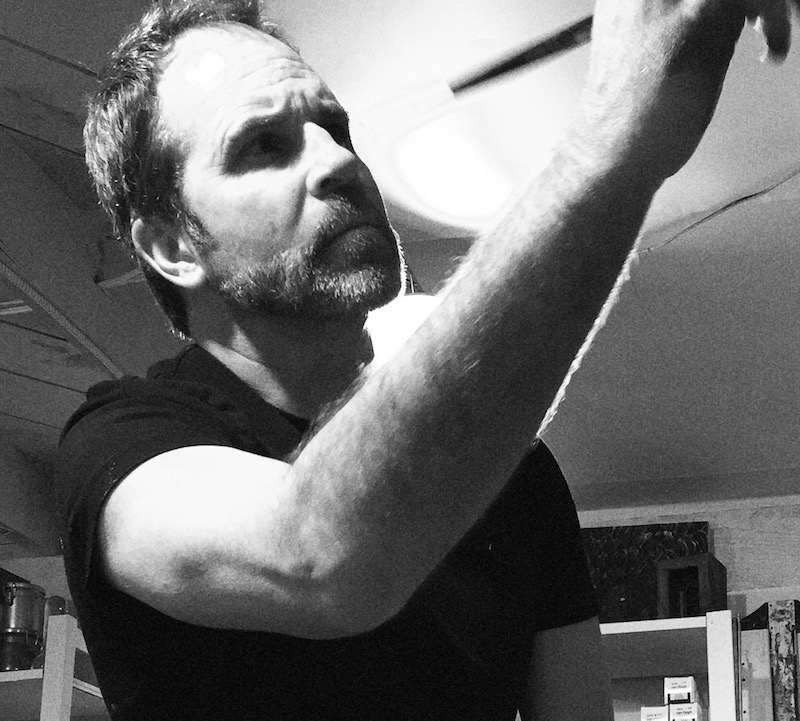
Jeffery Olson
Approaching Abstraction
Abstraction employs a technique with the goal of creating something both inventive and descriptive. The artist makes marks on the canvas that can be imagined as something else altogether. A surface where one hopes to embody the transformative power of line, form, and color.
PAINTS
I use Amsterdam Expert Acrylics as my primary medium. I use very few auxiliaries and prefer to use the paint straight from the jar.
My abstract approach and technique rely on a rapid layering of color, which is what makes acrylic the best paint for me as it dries much more quickly than oils.
The technique and application of the paint should be a determining factor in what medium you select. There is no best medium or technique for abstraction. In abstract painting, the medium is very much the message.
Once the paint is on the canvas, I begin by seeking an image that suggests something real yet vague. That special moment of becoming when the paint on the canvas, floats between what it is, and what it might be.
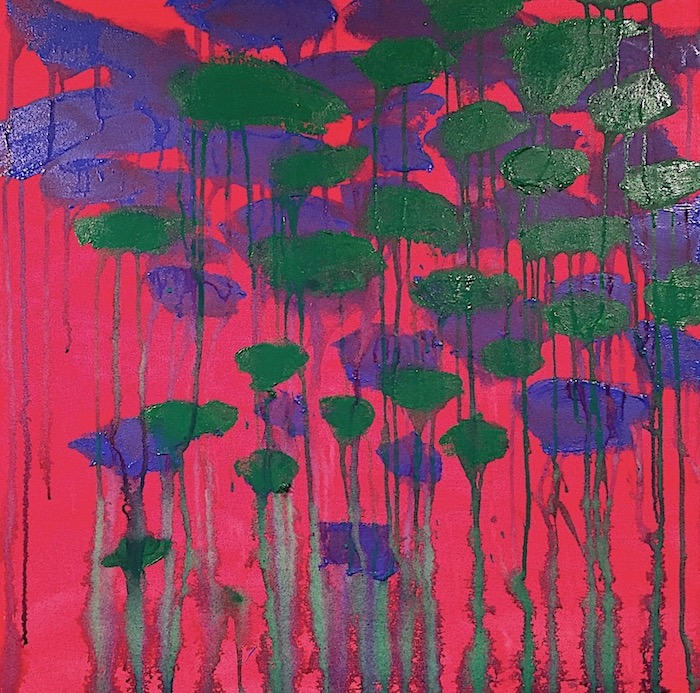
The artist’s ability to conceive of the possibilities that lie within any material, image, or object, where meaning and form can be translated in the mind’s eye, this is the essence of abstract painting.
PAINT BRUSHES
My brush choices have developed as my painting techniques have evolved. Mark making is at the center of my concerns as a painter, and I tend toward bristle brushes, using mostly brights and filberts.
I like the bristle brushes for their strength and flexibility. The brushes also develop a character over time giving each its own thumbprint on the canvas.
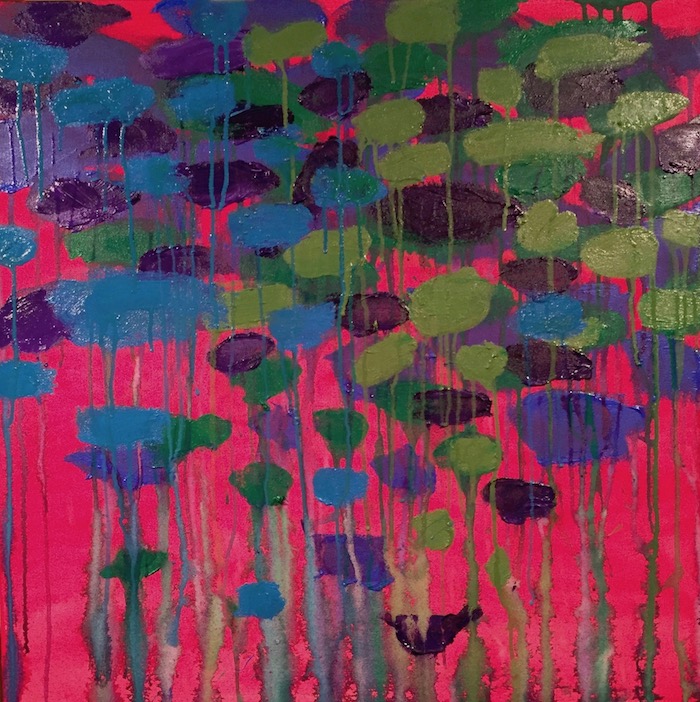
OTHER TOOLS
There are many art supplies, and brushes are only one tool to consider. Experimenting with painting knives, putty knives, sponges, or even old rags, is worth your time.
Search for a mark that can suggest something that is exciting and will lead to real exploration. It is the power of transformation, echoed in the processes of painting, that should motivate your efforts.
Stencils can often be an option, a way to free yourself to focus on the paint. Always remember, it’s okay to paint what you like!
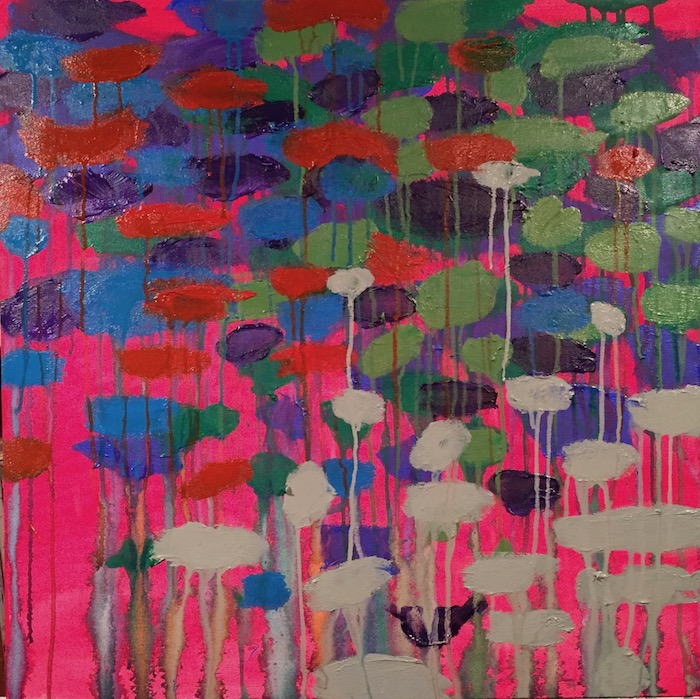
SUBJECT MATTER
Many subjects can provide inspiration, and one must have the confidence to explore a variety of sources. Draw from both personal experiences and memories that have impacted your vision of the world.
I’m always looking at art. The work of other painters, both contemporary and historical, have been a source of inspiration.
I spent much of my youth in the mountains of North Idaho and Western Montana. The forests, rivers, and lakes of my childhood became a foundation for my perception of the world.
In this acrylic painting, I was drawn to the beguiling dance of reflected light and color on the surface of water. Using these experiences of seeing as a point of departure. I have reimagined them as a painterly gambol of color and form upon the surface of the canvas.
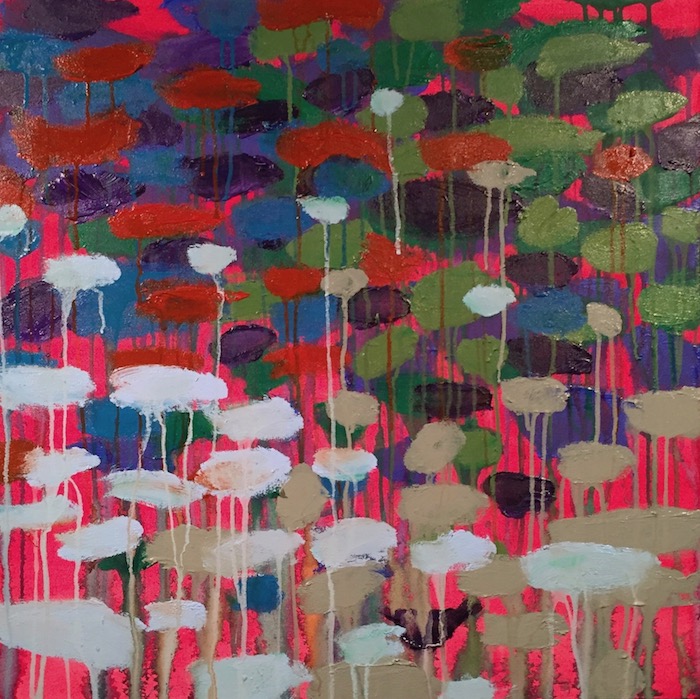
INSPIRATION
I was also very much influenced by Monet’s waterlily paintings.
If no particular image inspires you, simply start by covering the canvas with color. Select forms that reflect your personality. They can be organic, hard edge, or a mixture of the two.
“If no particular image inspires you, simply start by covering the canvas with color.” ~Jeffrey Olson
Always remember, it’s okay to paint what you like!
COLOR
In terms of color, the key is to harness its ability to transport the viewer emotionally.
I often begin by overlapping complementary colors which creates a vibrant surface. My palette includes mostly mono-pigmented paints, centered around primary and secondary colors.
Trust your intuition and rely on spontaneity. Embrace the unplanned and unknown. Place an emphasis on discovery, it’s what makes the journey of painting exciting and meaningful.
“Abstraction is a dialog. You put something down on the canvas, it speaks back to you, you reply.” ~Jeffrey Olson
Sometimes the dialog is quiet and thoughtful, other times loud and confrontational, either way, look and listen to your work, it will guide you.
Painting is an embodiment of human reflection and empathy; the evidence of the physical interaction of the artist with the “stuff of this world,” an evidence of life.
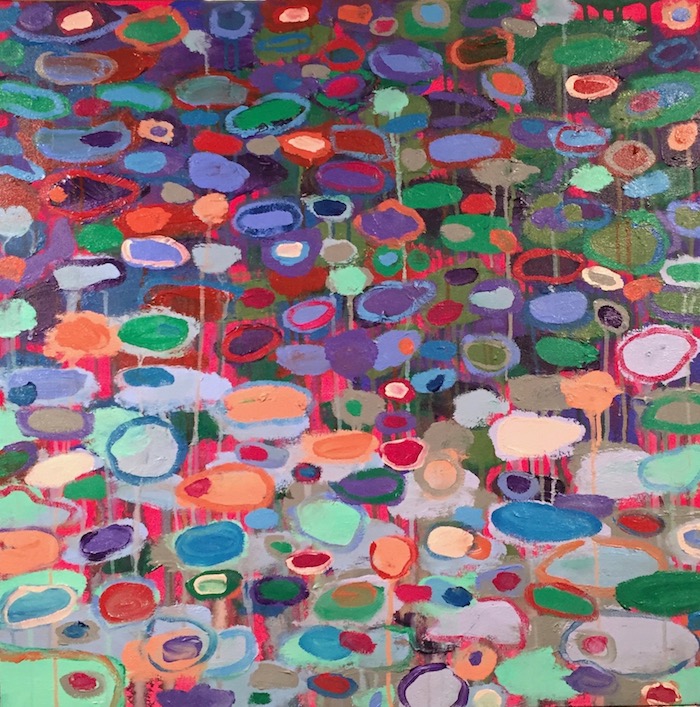
©JeffreyOlson Traverse 36×36 oil on canvas
Abstraction is a process of the imagination. It isn’t simply a matter of making something odd or different.
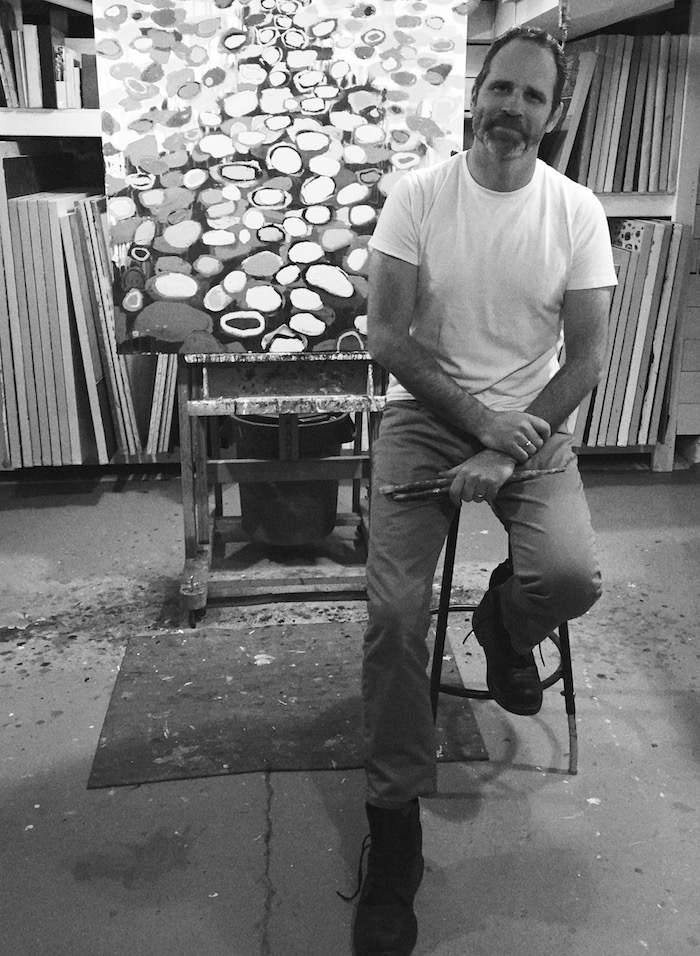
Jeffrey Olson in his studio
I believe in the uniqueness of experience like I believe in the uniqueness of painting. The variation may be a matter of inches, and it only takes a few inches to transform your entire way of seeing, to transform reality.
Guest artist/author: Jeff Olson is a Seattle based artist with a significant and original body of work spanning more than twenty- five years. His paintings offer a unique vision of the landscape and the inspirational forces of nature which shape it. Jeffrey holds an MFA in painting and drawing. He has more than a decade of college and university teaching experience in studio art, and twenty years in the art materials industry with product expertise in a variety of mediums. www.jeffolsonart.com.
The post A Colorful Abstract Approach to Acrylic Painting Inspired by Monet appeared first on Lori McNee Art & Fine Art Tips.


